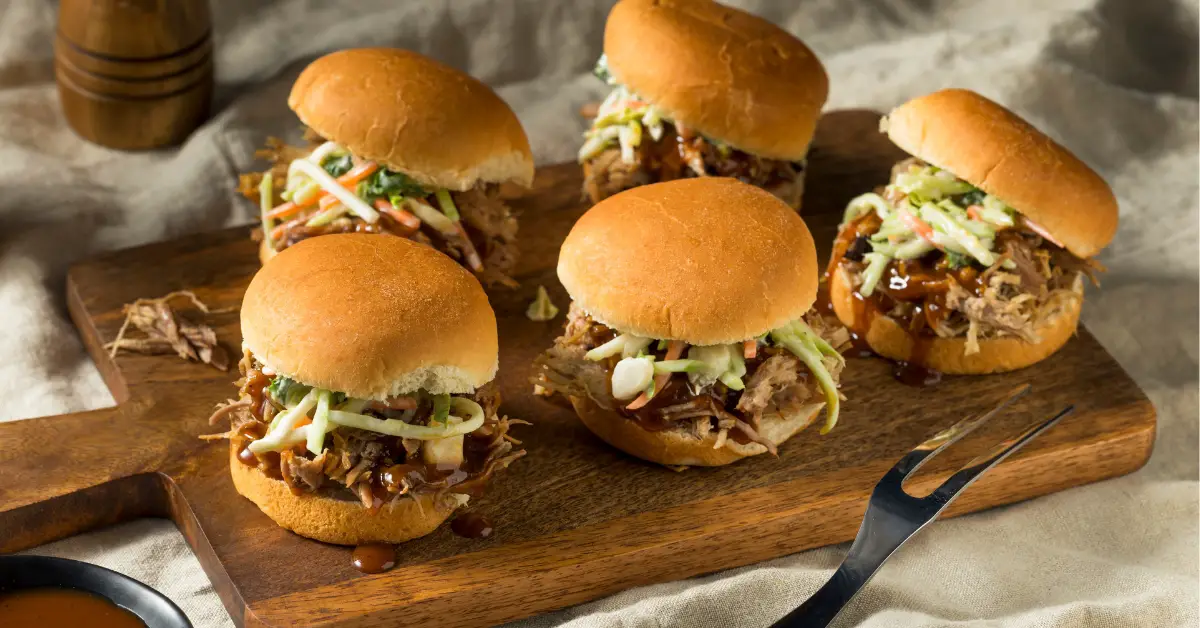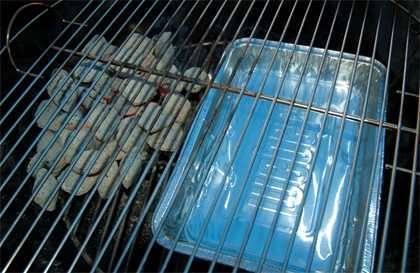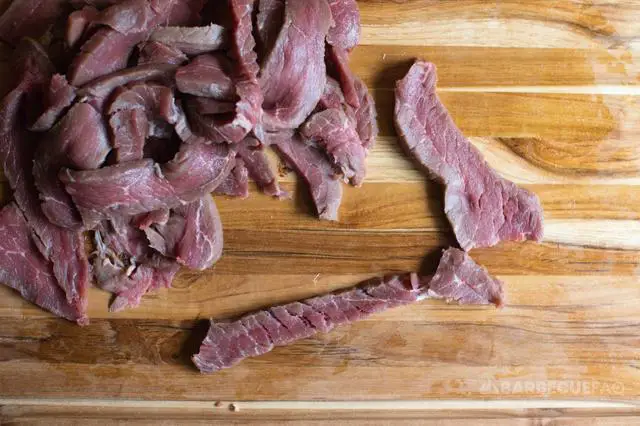
“Unbeatable Value: Discover the Cheapest Meat for Irresistible Beef Jerky. Savor the savory goodness without breaking the bank with our budget-friendly selection of premium beef cuts, carefully crafted to perfection. Indulge in tender, flavorful jerky that satisfies your cravings and saves you money. Explore our unbeatable prices and embark on a delicious journey into the world of affordable beef jerky.”
6 Best Cuts of Meat for Beef Jerky: Options Explained
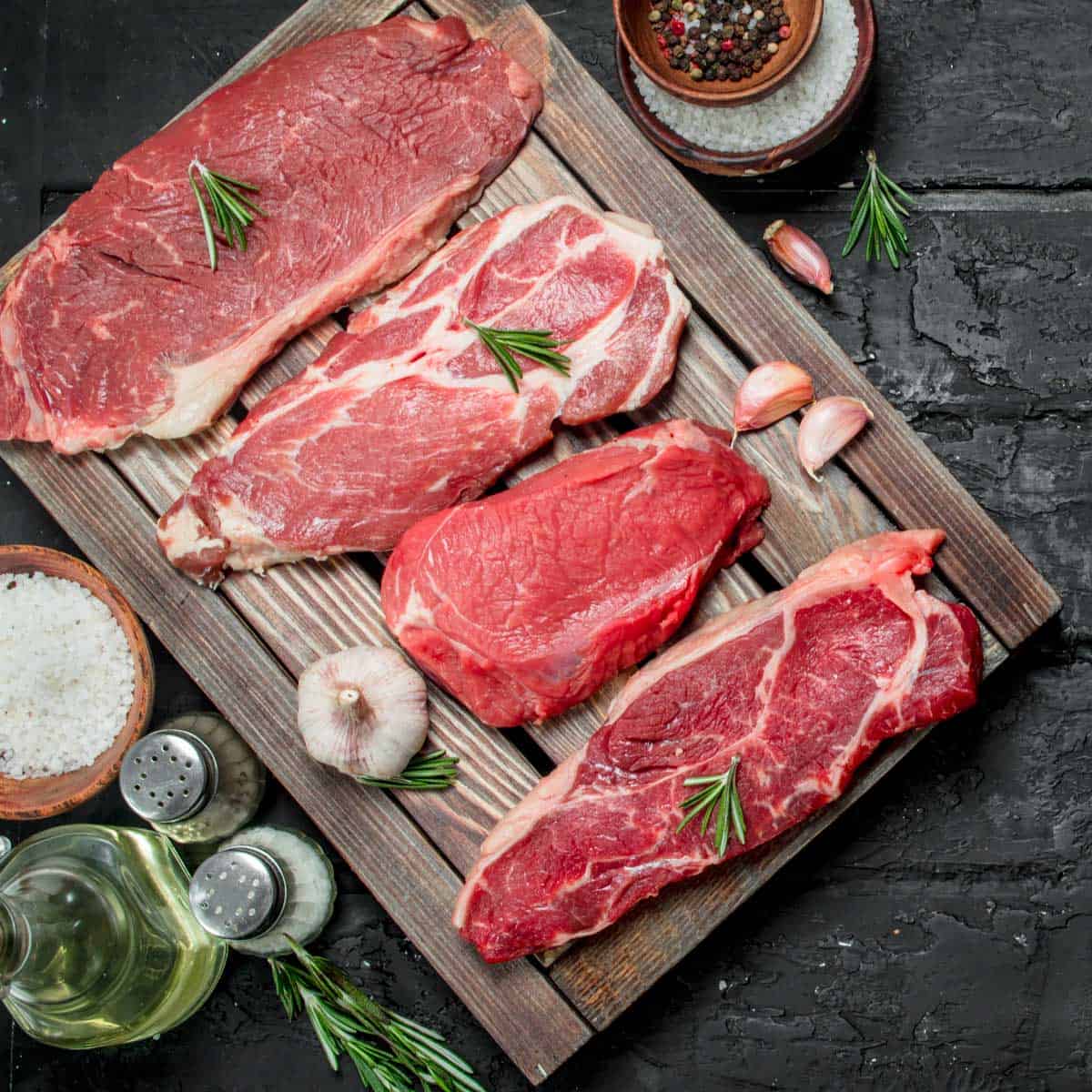
When it comes to making beef jerky, it’s important to choose cuts of meat that are lean and cheap. The best cuts for jerky usually come from the hind legs of the cow, such as the round roasts like eye of round, top round, and bottom round. These cuts are lean and lack tenderness, which makes them perfect for jerky.
Eye of round is often considered the best cut for beef jerky because it is the leanest of the three round roasts. It is taken from the inside of the rear legs and has minimal intramuscular fat. Top round is another good option for jerky, although it is slightly more expensive than bottom round. Bottom round, taken from the outside of the rear legs, is also suitable for making jerky.
Flank steak is a lean beef primal that works wonderfully for jerky. It produces only one sub-primal cut – the flank steak – and has minimal fat content. However, flank steak can be more expensive compared to round roasts. Another option for beef jerky is sirloin tip roast or steak, which comes from the front side of the hind leg. While it is more tender than other parts of the round, it still isn’t considered “tender” and works well for making jerky.
While I personally have never used brisket meat to make jerky, some craft jerky makers and meat processors specifically use brisket. Brisket is taken from the breast section of the steer and consists of two muscles – point and flat. The flat muscle lacks intramuscular fat and is ideal for making lean jerky.
In conclusion, when choosing cuts of meat for beef jerky, opt for lean and cheap options like eye of round, top round, bottom round, flank steak, sirloin tip roast, or brisket. These cuts are typically taken from the hind legs of the cow and have minimal fat content, making them perfect for jerky.
Best Cuts of Meat for Beef Jerky
When it comes to making beef jerky, the best cuts of meat are lean and cheap. Typically, cuts from the hind legs of the cow are ideal for jerky. The round roasts, including eye of round, top round, and bottom round, are popular choices due to their lean qualities. These cuts are taken from the round primal and are known for their affordability and lack of tenderness.
In addition to round roasts, other cuts like flank steak, sirloin tip roast, and brisket flat can also work well for making beef jerky. Flank steak is a lean beef primal that produces only one sub-primal cut – the flank steak. It is heavily exercised and fibrous, making it a great option for jerky. Sirloin tip roast is another choice that is more tender than other parts of the round but still not considered “tender.” Brisket flat, taken from the breast section of the steer, lacks intramuscular fat and is commonly used by craft jerky makers.
While eye of round is often recommended as the best cut for beef jerky due to its leanness, any of the “round” roasts will work great for jerky as they come from around the same area on the cow – the round primal. The key is to choose a cut that is naturally lean and affordable. Fat content should be minimal as it won’t render when making jerky and can go rancid.
1. Top Round Roast or London Broil
When it comes to choosing the best cuts of meat for beef jerky, top round roast or London broil are excellent options. These cuts come from the hind legs of the cow and are known for their lean and tender qualities. Top round is more expensive than bottom round but offers a better taste and tenderness. Look for top round roasts that are free of veins or gristle, as these won’t render well when used for jerky.
Eye of round is another popular choice for making beef jerky. It is a sub-primal cut sourced from the round primal, which is located in the hind legs of the cow. This cut is typically lean and lacks intramuscular fat, making it ideal for jerky. While eye of round may contain an exterior fat cap, it can be easily removed when making jerky.
Flank steak is a lean and fibrous cut that works wonderfully for beef jerky. It comes from the flank area, just below the loin, and is known for its minimal fat content. However, keep in mind that flank steak has become somewhat expensive compared to other cuts mentioned above.
While sirloin tip roast is more tender than other parts of the round, it still isn’t considered very tender overall. This makes it suitable for making beef jerky due to its tighter grain structure. Look for roasts instead of steaks to save money when using this cut.
Brisket flat can be used to make beef jerky as well, although it’s not as commonly used as the other cuts mentioned above. The flat muscle lacks intramuscular fat, making it a lean option for jerky. Keep in mind that brisket is comprised of two muscles – the point and the flat – and it’s the flat that is used for jerky.
Regardless of the cut of meat you choose, it’s important to slice the jerky against the grain to ensure tenderness. Experiment with different cuts to find your preferred level of chewiness.
2. Bottom Round Roast
The bottom round roast is a cut of beef that comes from the hind legs of the cow, specifically from the outside of the rear legs. It is smaller in size compared to the top round and has a rectangular shape. This cut of meat is known for its tight grain and is commonly used for ground beef or cube steak. However, it can also work well for making beef jerky.
One advantage of using bottom round roast for jerky is its affordability. It is usually cheaper than other cuts like eye of round or top round. Additionally, this cut tends to be lean and lacks tenderness, which are desirable qualities for making jerky.
When selecting a bottom round roast for jerky, it’s important to look for meat that is void of veins or “gristle.” Gristle is not palatable or edible and should be removed if present. While there may be small amounts of exterior fat and silver skin that need to be trimmed, overall, the bottom round roast can be a great choice for homemade beef jerky.
3. Eye of Round
Eye of round is considered one of the best cuts for beef jerky due to its lean nature. It is sourced from the round primal, specifically the hind legs of the cow. Round cuts are known for being inexpensive and lean, making them ideal for jerky. While all round roasts can be used for jerky, eye of round is often preferred because it is the leanest of the three cuts.
The cylindrical shape of the eye of round makes it easy to work with when making jerky. It typically contains minimal intramuscular fat, although there may be an exterior fat cap that can be easily removed. This cut is commonly used for roasts but works well for jerky due to its low-fat content.
When compared to other cuts like bottom round and top round, eye of round tends to have a slightly higher price point. However, the difference in price is usually negligible, and many people find that it has a better taste than other cuts. When selecting eye of round for jerky, it’s important to choose meat that is free from veins or gristle.
Overall, eye of round is a popular choice for beef jerky due to its leanness and ease of use in slicing thin strips against the grain.
4. Flank Steak
Flank steak is a sub-primal cut derived from the beef primal known as the flank. It is located just below the loin on the carcass of the steer. This muscle, like brisket, is heavily used and therefore has a fibrous texture. Contrary to popular belief, flank steak contains minimal fat and is quite lean. It may have some exterior fat due to poor butchering, but overall it is a lean cut of meat.
Due to its lean nature, flank steak works exceptionally well for making beef jerky. Its fibrous texture allows it to hold up well during the drying process, resulting in a chewy and flavorful jerky. However, it should be noted that flank steak tends to be more expensive compared to other cuts like eye of round or top round.
In terms of pricing at my local grocery store, flank steak was priced higher than round roasts such as eye of round and top round. If given the choice between these cuts for making jerky, I would opt for eye of round or top round due to their lower cost.
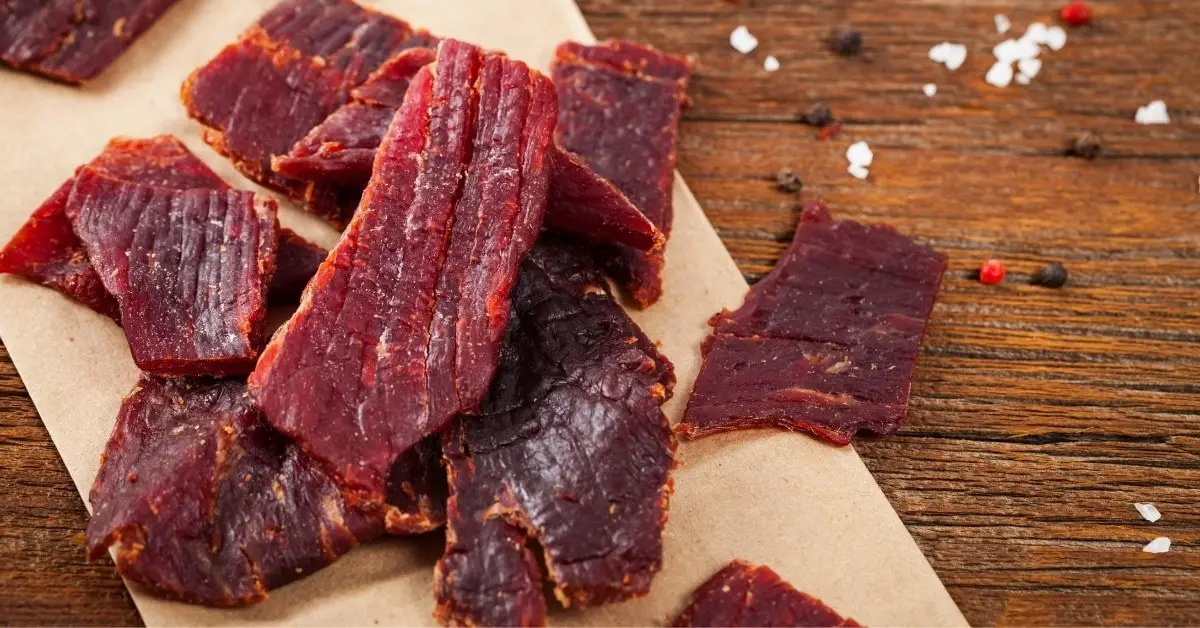
5. Round Tip Roast (Sirloin Tip Roast)
The Round Tip Roast, also known as Sirloin Tip Roast, is a cut of meat taken from the front side of the hind leg. While it is more tender than other parts of the round, it still isn’t considered “tender” compared to other cuts. This makes it suitable for both steaks, roasts, and ground beef. When using this cut for jerky, it is recommended to look for roasts rather than steaks to save money.
The Sirloin Tip Roast may have more inter-muscle fat and sinew, which is not ideal for beef jerky as fat does not render well in this process. Towards the end of the roast, there may be more sinew between the muscles. However, most butchers are aware of this and will usually remove these unwanted parts. The Sirloin Tip Roast can also be separated from the “tri-tip” muscle that sits just above it on the outermost edge.
In terms of pricing, the Sirloin Tip Roast is usually similar in price to Bottom Round and Top Round cuts. It can vary depending on location and store.
6. Brisket
Brisket is a cut of beef taken from the breast section of the steer, specifically under the first five ribs. It consists of two muscles – the point and the flat. The flat muscle, also known as the “lean,” is the part used for making jerky because it lacks intramuscular fat. In a grocery store, you can find flats separated from the point or easily separate them yourself with a sharp knife.
A whole brisket can weigh anywhere from 8 to 20 pounds, with the majority of that weight being the flat muscle. Slicing brisket for jerky is simple as it is a thin, flat muscle with a defined grain structure. However, you may need to trim nodules of surface fat and silverskin before slicing.
While fat content can be desirable for other cuts of meat like steak or larger cuts like brisket where you can render the fat, it is not useful for jerky. Starting with a naturally lean cut like brisket’s flat muscle is your best option.
Which Cuts to Avoid for Jerky?

When making beef jerky, it’s important to avoid cuts of meat that are fatty or have a high fat content. Fat does not render when making jerky and can go rancid, affecting the taste and quality of the jerky. Therefore, cuts of beef that are marbled with fat or come from areas of the cow that are more fatty should be avoided for jerky.
Cuts to avoid for jerky include ribeye, striploin, chuck roast, and brisket point. These cuts tend to have a higher fat content and are better suited for grilling or slow cooking methods where the fat can render and add flavor. Additionally, cuts from the chuck or shoulder area may be tougher and less suitable for making tender jerky.
It’s also important to trim off any visible exterior fat or silver skin from the chosen cut of meat before making jerky. This will help ensure a leaner product with a longer shelf life.
Slicing Any of These Cuts for Jerky
Slicing Any of These Cuts for Jerky
When it comes to slicing the cuts of beef for jerky, there are a few key things to keep in mind. First and foremost, it’s important to slice the meat against the grain. This helps to break up the muscle fibers and make the jerky more tender.
To determine the direction of the grain, look for the lines or fibers running through the meat. Slice perpendicular to these lines for optimal results.
Another factor to consider is thickness. The thickness of your slices will affect both the texture and cooking time of your jerky. Thinner slices will result in crispier jerky that cooks faster, while thicker slices will be chewier and take longer to cook.
It’s generally recommended to slice your beef between 1/8 inch and 1/4 inch thick for jerky. This ensures that it dries out properly without becoming too tough.
When slicing, it’s also important to use a sharp knife. A dull knife can tear at the meat and make it more difficult to achieve even slices.
Overall, taking care with your slicing technique can greatly impact the final texture and quality of your beef jerky. So pay attention to grain direction, thickness, and use a sharp knife for best results.
In conclusion, finding the cheapest meat for beef jerky is essential for those looking to make this popular snack on a budget. While lean cuts like eye of round or bottom round are typically more affordable options, it’s important to consider factors such as quality and taste. Ultimately, conducting thorough research and exploring local markets can help individuals find the best balance between cost and flavor when making beef jerky at home.
Learn More About Grilling
If you want to learn more about grilling, check out these other helpful resources!


